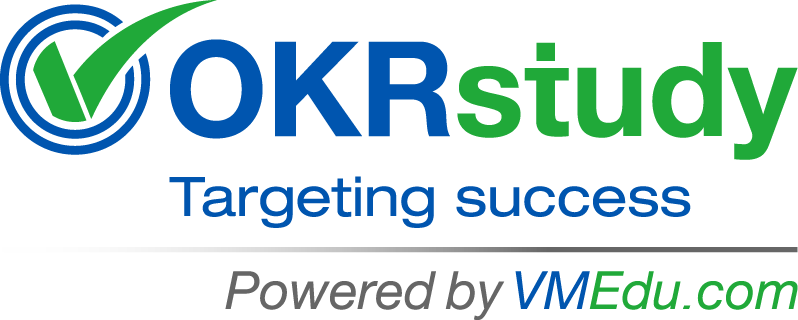OKR Review Meetings are a crucial part of the OKR framework. These meetings provide an opportunity to assess the progress of your objectives and key results, identify challenges, and make any necessary adjustments to stay on track. Here's a breakdown of the key elements and best practices for conducting effective OKR Review Meetings:
1. Purpose of the Meeting
- Progress Check: Evaluate the status of each objective and its associated key results.
- Problem Solving: Discuss any roadblocks or challenges that might be preventing progress and find ways to overcome them.
- Alignment: Ensure that the team’s objectives are aligned with the broader organizational goals.
- Adjustment: If necessary, adjust the strategy, timelines, or key results to ensure that objectives can still be achieved.
2. Frequency of the Meetings
- Typically held quarterly as OKRs usually span 90-day cycles, but depending on the organization, monthly or bi-weekly reviews can be scheduled, especially for more agile teams.
3. Participants
- OKR Owners: Individuals responsible for setting and driving progress toward specific OKRs.
- Team Members: Anyone involved in the execution of the OKRs.
- Stakeholders/Leadership: Senior leadership or department heads who are interested in the broader progress toward the organization's goals.
- Optional: Other teams or departments who might be impacted by or contributing to the OKRs.
4. Structure of the Meeting
- Here’s a typical structure for an OKR review meeting:
-
Opening (5-10 minutes)
- Set the context: Remind everyone of the objectives and key results being reviewed.
- Review meeting agenda: Ensure everyone knows the flow of the meeting.
-
Progress Review (15-30 minutes)
-
Objective-by-Objective Review: Each OKR owner or team updates the group on the progress of their objectives.
- How close are we to achieving each key result?
- What’s the current score (e.g., 0-1.0 scale, or percentage completion)?
- Any key milestones reached or blockers encountered?
- Discuss any challenges or roadblocks faced.
-
Objective-by-Objective Review: Each OKR owner or team updates the group on the progress of their objectives.
-
Analysis & Discussion (15-20 minutes)
- Identify challenges: Are there significant obstacles preventing key results from being achieved?
- Root cause analysis: What’s causing these obstacles (e.g., lack of resources, misalignment in teams, unclear expectations)?
- Strategic adjustments: Should any key results be adjusted, redefined, or recalibrated based on current circumstances?
- Alignment check: Are the OKRs still aligned with overall business priorities?
-
Action Plan (10-15 minutes)
-
Decide on concrete actions for the next period, such as:
- Resource allocation.
- Adjusting deadlines.
- Shifting priorities.
- Setting new action items to resolve challenges or complete key results.
- Assign ownership: Make sure everyone knows who is responsible for what moving forward.
-
Decide on concrete actions for the next period, such as:
-
Closing (5 minutes)
- Summarize key decisions and action items.
- Confirm the next review date.
- Optionally, get feedback from participants about the meeting to improve future OKR reviews.
5. Best Practices
- Transparency: Be open about where things stand. It’s okay if some OKRs aren’t fully on track as long as the team learns from it.
- Data-Driven: Always base discussions on data and progress metrics. Use OKR dashboards or tracking tools to show objective completion percentages.
- Focus on Solutions: Instead of just highlighting problems, focus on how to resolve challenges and keep progressing.
- Time Management: Stick to the allocated time to ensure the meeting is productive. Avoid getting bogged down in details that aren't relevant.
- Collaborative: Encourage feedback and contributions from everyone involved to ensure diverse perspectives on progress and solutions.
- Document Outcomes: Make sure action items and decisions are documented clearly for follow-up in the next review.
6. Key Outputs
- Updated OKR Progress: A refreshed view of how well objectives are being achieved.
- Action Items: Any changes to strategy or tactics moving forward.
- Potential OKR Adjustments: Any revisions needed to the key results or objectives themselves.
- Learnings: Insights on what worked well or could be improved for the next OKR cycle.
7. Tools for OKR Review
- OKR Dashboard: A centralized tool for visualizing progress, such as software like Vabro, Gtmhub, 15Five, or even Google Sheets/Excel for smaller teams.
- Project Management Tools: Tools like Vabro, Jira, Asana, or Trello to track tasks and progress related to OKRs.
- Meeting Notes/Documentation: Use shared documents or collaboration tools like Notion, Google Docs, or Confluence to record meeting outcomes and action items.
8. Challenges to Be Aware Of
- Overly Ambitious OKRs: It’s tempting to set bold, stretch goals, but unrealistic OKRs can lead to frustration.
- Lack of Ownership: Without clear ownership of each key result, accountability can be diluted.
- Misalignment with Business Strategy: OKRs should always reflect the company’s top priorities; otherwise, they can drift into unrelated tasks.
- Too Much Focus on Metrics: Key results should be outcome-focused, not just about numbers. It’s important to also measure impact and value.
OKR review meetings are key to keeping everyone on track and ensuring continuous alignment with the organization’s overarching goals.
